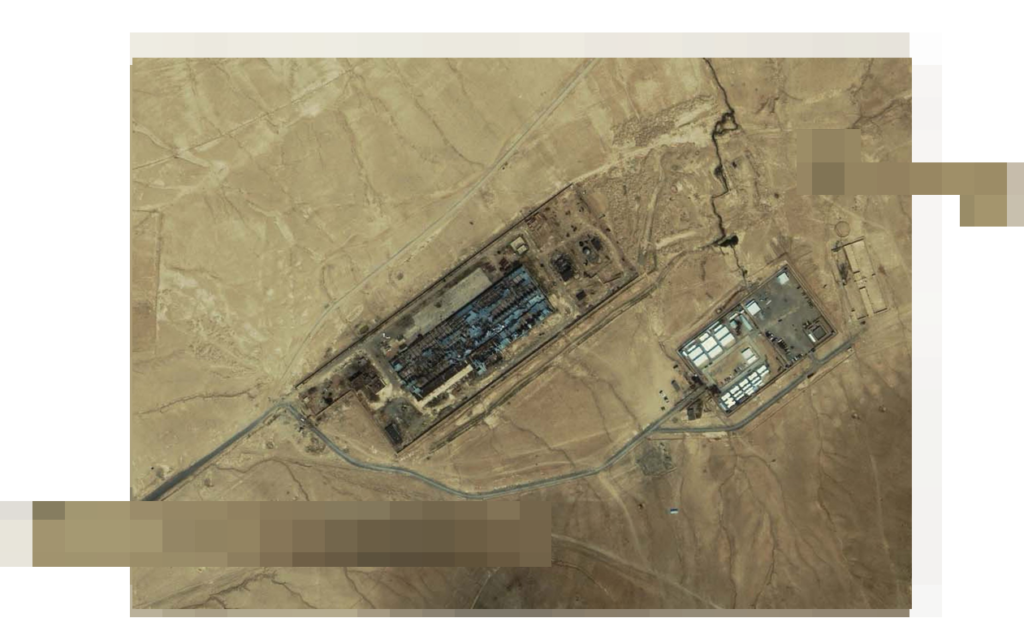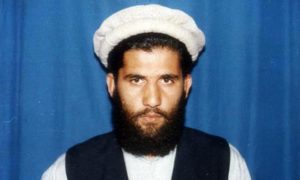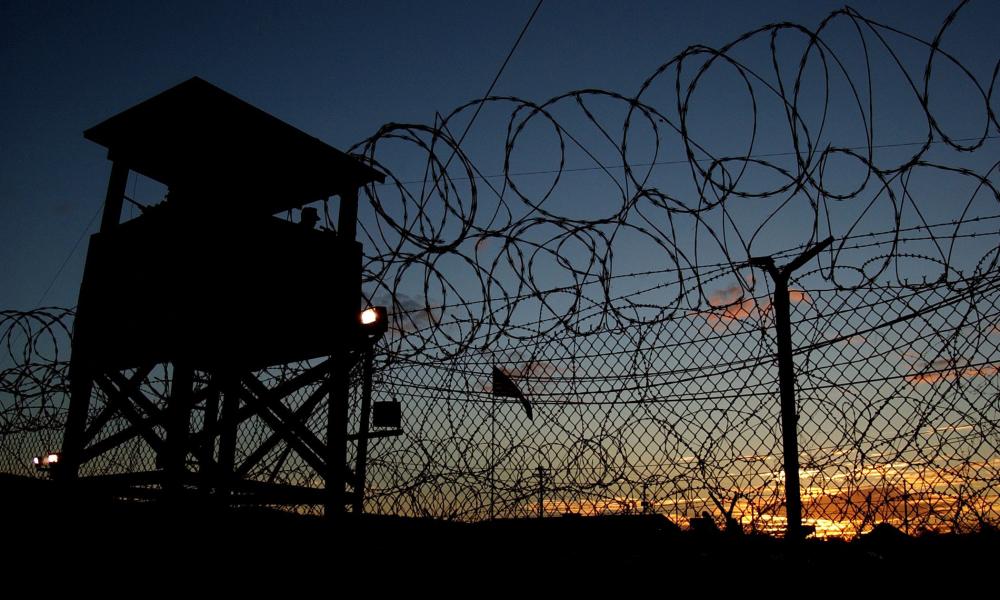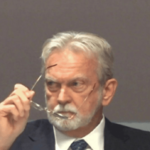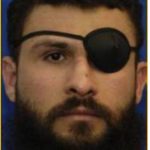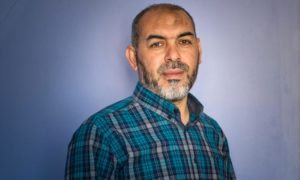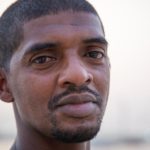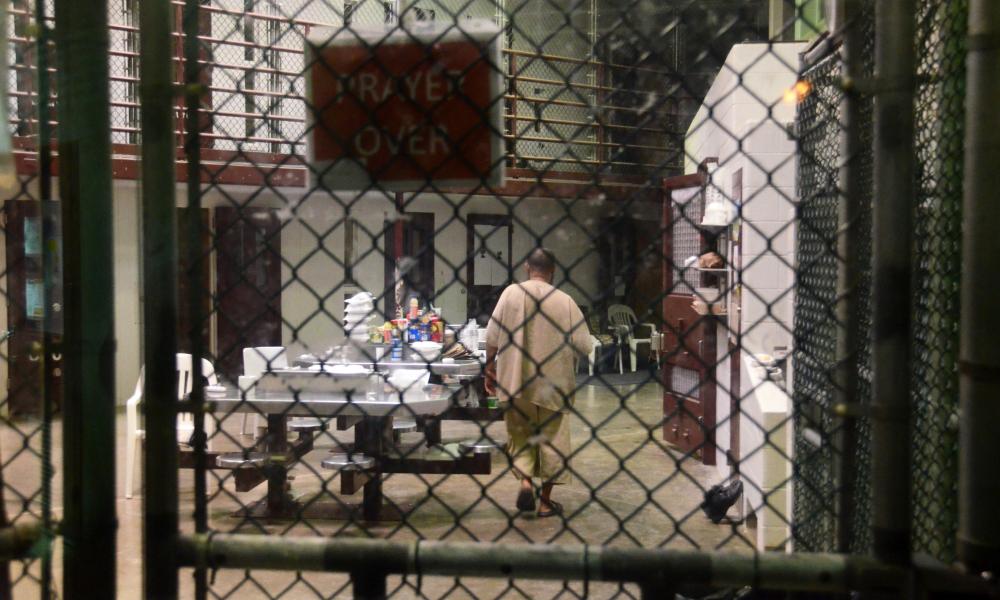Inside the CIA’s Black Site Torture Room
EXPOSURES - EXPOSÉS, ANGLO AMERICA, MILITARISM, 16 Oct 2017
Chronology of significant events – November 2002
Rahman wearing only socks and diaper; supervisor has concern regarding hypothermia.
Rahman subjected to 48 hours of sleep deprivation, rough treatment, cold shower and other measures but remained noncompliant.
Subjected to cold conditions and minimum food and sleep… confused due to dehydration and fatigue.
Cable recommends future use of continued environmental deprivations with interrogations 18 out of 24 hours daily.
Linguist asks questions about the temperature at which hypothermia occurs.
November 19 2200 hrs
guard check – Rahman is alive.
2300 hrs
guard check – Rahman is alive.
November 20 0400 hrs
guard check – Rahman is alive.
0800 hrs
guard check – Rahman is alive.
1000 hrs
guard check – Rahman is dead.
*******************************
9 Oct 2017 – There were twenty cells inside the prison, each a stand-alone concrete box. In sixteen, prisoners were shackled to a metal ring in the wall. In four, designed for sleep deprivation, they stood chained by the wrists to an overhead bar. Those in the regular cells had a plastic bucket; those in sleep deprivation wore diapers. When diapers weren’t available, guards crafted substitutes with duct tape, or prisoners were chained naked in their cells. The cellblock was unheated, pitch black day and night, with music blaring around the clock.
“The atmosphere was very good,” John “Bruce” Jessen told a CIA investigator in January 2003, two months after he interrogated a prisoner named Gul Rahman in the facility. “Nasty, but safe.”
Jessen, one of the two contract psychologists who designed the CIA’s “enhanced interrogation techniques”, spent 10 days in the secret prison near Kabul, Afghanistan, in November 2002. Five days after he left, Rahman, naked from the waist down and shackled to the cold concrete floor, was discovered dead in his cell from hypothermia.
In August, Gul Rahman’s family and Mohamed Ben Soud and Suleiman Abdullah Salim, two surviving prisoners of the Afghan black site, reached an out-of-court settlement in their lawsuit against Jessen and James Mitchell seeking restitution for torture.
By settling the suit, Mitchell and Jessen avoided a trial that would have brought into the full light of an American courtroom what happened in the prison codenamed Cobalt, and known simply as “the Darkness” to its prisoners.
But much of what the plaintiffs hoped would be aired before a jury can be found in 274 documents the CIA and Pentagon were forced to declassify and release during pre-trial discovery.
These documents, many of them scheduled to be entered as exhibits at trial, provide the fullest picture yet of what the three men suffered in that secret CIA dungeon – and of how fatefully their lives intersected with the rise and fall of James Mitchell and Bruce Jessen, the men who designed the torture regime.
The guy with all the tricks
Among the most illuminating of these documents is the report CIA investigators delivered to James Pavitt, the agency’s deputy director for operations, on 28 January 2003 on the death of Gul Rahman. In 32 clear-eyed pages, and in attachments that include a stark “Chronology of Significant Events” and notes from interviews with Jessen and the young CIA officer assigned to manage the black site, the investigation reconstructs the decisions that killed a prisoner just 69 days after the facility opened.
Opened in September 2002 and filled to capacity within a month, the site operated by a combination of careful planning and impulsive improvisations, investigators found.
The cells were designed for sensory deprivation, but the site manager put his own spin on what this would mean. The blaring stereo was his idea, and his purchase.
“As to darkness,” the investigator learned from the site manager, “that again was his decision.” One light switch controlled all the lights in the cellblock, interview notes record, and “[f]aced with the choice to keep them on all the time or off all the time, he chose the latter”.
The site manager, whose name is redacted in documents released for the lawsuit but who was first identified as Matthew Zirbel in the footnote of a report provided to Congress, had no experience in prison operations and did not know until three days after he arrived at Cobalt that he would be running the facility.
Previous revelations have highlighted his actions during Rahman’s detention, which began when Rahman was renditioned from Pakistan into the prison. But the new documents suggest Rahman might still be alive if Jessen had not arrived at Cobalt around the same time and taken a direct role in Rahman’s interrogation.
Jessen, who interrogated Rahman six times over a two-week period, and Mitchell, who met with him once, claimed throughout the lawsuit that they tried to mitigate the harsh conditions of Rahman’s confinement. But cables show it was Jessen who debated whether to subject Rahman to enhanced interrogations techniques with CIA headquarters, and it was Jessen whose advice held sway when he andZirbel plotted Rahman’s interrogation. “He could tell that [the site manager] was running all of his suggestions through his ‘bullshit filter,’” the investigator notes from his interview with the psychologist, but “Jessen said he was the guy with all the tricks”.
Zirbel accepted Jessen’s suggestion that when Rahman complained that he was cold, he was using a sophisticated al-Qaida resistance technique. When Rahman “claimed inability to think due to conditions (cold),” “complained about poor treatment,” and “complained about the violation of his human rights”, as a cablerecorded after one of Jessen’s interrogations, these were evidence, Jessen said, of a “health and welfare” resistance strategy.
But in the uninsulated prison, with winter approaching, Rahman was just cold, dangerously so, for at least two weeks before he died from hypothermia. A CIA supervisor who visited the facility just after Rahman arrived told the CIA’s investigator “it was very cold in [Cobalt] when he was there … and the issue of hypothermia crossed his mind as he saw Rahman wearing only socks and a diaper.”
The supervisor discussed Rahman’s situation with a colleague, the CIA’s inspector general reported in a 2005 internal investigation of Rahman’s death, but took no action because “he assumed that the officers there would realize it was cold and would not leave a prisoner unclothed for a long period”.
In fact, guards and interpreters told investigators that Rahman was naked, naked below the waist, or naked but for a diaper almost his entire time in the prison.
Jessen knew this, and saw it was having a physical effect. He acknowledged to the investigator that “Rahman would have lost his clothes at our direction.” He described seeing Rahman “shaking [and] showing the early signs of hypothermia” after he was given “a cold shower as a deprivation technique”.
Notes from one of Jessen’s interrogation sessions begin, “Rahman spent the days since his last session with station officers in cold conditions with minimal food and sleep. Rahman appeared somewhat incoherent for portions of this session.”
Nevertheless, when Jessen left Cobalt on or around 14 November 2002, he told Zirbel that overcoming Rahman’s resistance would require more of the same deprivations that were clearly weakening him. “It wasn’t going to happen fast,” he told the investigator in the January 2003 interview. “[Rahman] is physically strong, hitting him isn’t going to do any good. You have to wear him down physically and psychologically … It would take one to several months to get him to a level of cooperation,” he predicted.
Five days later, at 3pm on 19 November 2002, “Rahman was shackled in a sitting position on bare concrete while nude from the waist down,” the 2003 investigation recorded. Guards checked on Rahman four times overnight, at 10 and 11pm, and at 4 and 8am. During the 4am cell check, with the outside temperature now 31F, a guard “looked into his cell and whistled.” At 8am, “Rahman was sitting in his cell, alive and shaking”, his “eyes were open and blinking”. “Rahman’s shaking did not seem unusual,” the guard told the investigator, “because all of the prisoners shake.” Two hours later, a guard looked into the cell and found Rahman lying on his side. When he tapped the door with his nightstick, the prisoner did not move.
‘We wrote out a list’
The road to a contract psychologist telling a CIA investigator that he was the one with all the interrogation tricks began just a year before, in early 2002, when Jessen and Mitchell wrote a paper titled “Countermeasures to Al Qaeda Resistance to Interrogation Techniques”.
The paper, released with redactions for the first time during the lawsuit, promised to deliver methods for recognizing when captives were using sophisticated resistance techniques and “strategies for developing countermeasures”.
The paper was based on the pair’s reading of the Manchester Manual, an extremists’ handbook that included a section on the brutal interrogations recruits were likely to experience in the prisons of authoritarian regimes. The manual combines advice like “stay psychologically and mentally calm and maintain alertness and foresight” with practical instructions on how to respond to torture.
In their Countermeasures paper, Mitchell and Jessen conflate all of these as resistance strategies. Sticking to a story, requesting a lawyer, complaining about prison conditions, asking for medical attention, reporting torture: all of these, the pair wrote, “reveal that a sophisticated level of resistance training is available to high-risk al-Qaida operatives.”
The fact that their paper opened with the caveat: “We are not experts in Arab culture or the organization of al-Qaida” did not dampen enthusiasm for their ideas.
Through the spring of 2002, the two psychologists marketed their approach for overcoming the resistance of al-Qaida fighters, Jessen to the Pentagon and Mitchell to the CIA. They pitched their product in two PowerPoint presentationsillustrated with what they called “the Circle Metaphor”, a diagram they peddled as “an effective way of thinking about resistance behavior.”
In his pre-trial deposition, Jessen insisted that the interrogation methods he and Mitchell first proposed to defeat this resistance included no physical pressures and were consistent with the Geneva Conventions. But by April, Jessen was crafting an “Exploitation Draft Plan” that included holding captives in soundproof cells in secret facilities that were beyond the reach of the Red Cross, the press, and US and foreign observers. A few months later, “Jim and I went into a cubicle,” as Jessen recalled during his deposition. “He sat down at a typewriter, and together we wrote out a list” that became the CIA’s enhanced interrogation techniques.
CIA cables produced for the lawsuit chronicle the application of thetechniques during the CIA’s 2002 interrogation of Abu Zubaydah, who was waterboarded at least 83 times. Mitchell joined that interrogation a few weeks after Zubaydah, who was captured in Pakistan in March, was delivered to the agency’s first black site in Thailand, and many of his team’s communications with CIA headquarters have a test lab feeling.
A series on the design of “confinement boxes” has titles like “Comments re Likely Psychological Impact of the Confinement Box on the [Redacted] Process with AZ” and “Further Comments on Construction and Particulars Concerning an Additional Confinement Box for Use During Upcoming Interrogation of Abu Zubaydah”.
Other cables describe in grinding detail how their techniques were combined in actual interrogation sessions, and their crushing, dehumanizing effect. In one passage from a six-page cable describing “day six of the aggressive phase” of Abu Zubaydah’s interrogation, which took place on 9 August 2002, “The interrogators pointed to the small box and said, ‘You know what to do.’”
“The subject sat on the floor and scooted himself into the small box at 1000 hours without protest or additional instructions,” Mitchell’s team recorded. Over the next eight hours, Abu Zubaydah was moved back and forth between the large and small confinement boxes and slammed against a wall in the technique known as “walling”. The waterboard was rolled in, and the interrogator says again, “You know what to do.” Told he could end the torments if he told interrogators what they wanted to know, the cable reports, “Subject whimpered that he had nothing.”
Eight days later, a cable from the Thai black site was extolling the success of the three-week “aggressive phase” of Abu Zubaydah’s interrogation, the goal of which had been “to induce complete helplessness, compliance, and cooperation from the subject” and “to reach the stage where we have broken any will or ability of subject to resist or deny providing us information”. The process, Mitchell wrote in the cable, “should be used as a template for future interrogation of high value captives”.
As Mitchell was writing this, construction of the Cobalt facility near Kabul was nearing completion.
A month later, as the first prisoners were delivered into its 24-hour darkness, a CIA memo described the role the two psychologists would now be playing in the agency’s expanding interrogation program. “The direct assessment, called a mental state exam, can be done shortly after the initial capture by either Jim or Bruce,” it said. This will allow them “to determine the best physical and psychological pressures that would be needed to get this individual to a compliant state as quickly as possible”.
To meet the anticipated demand for the pair’s “EITs”, interrogators in both the CIA and Pentagon were reading their countermeasures paper, seeing their PowerPoint slides, and attending trainings on their techniques.
“Hey, Jim: I really enjoyed the conference,” begins an email to Mitchell after a gathering of “a nice group of people” that included interrogators, psychologists, and psychiatrists from Guantánamo.
The writer complains about Gitmo, where “detainees run every aspect of the camp and the interrogators have little (if any) control” and where there is “no opportunity to take advantage of capture shock, dislocate anyone’s expectations (except for the interrogators), or develop learned helplessness (except the interrogators).” Pledging to forward copies of their Countermeasures paper to Guantánamo, the writer adds, “It’s clear that you and Bruce need to be involved for this to be done right.”
‘Blatant disregard for ethics’
Six months later, in March and April 2003, Mohamed Ben Soud and Suleiman Abdullah Salim became two of 39 men subjected to Mitchell and Jessen’s enhanced interrogation techniques in the CIA’s secret prisons.
Ten gas heaters were added in the cellblock the month after Gul Rahman’s death, but little had changed in what Jessen called Cobalt’s “nasty” routines. Salim and Ben Soud were still held in darkness and shackled around the clock, often naked, to the ring in the wall or to the overhead bar in the sleep deprivation cells. But during interrogation sessions they also now faced methods including holds and slaps, walling, water dousing (where they were placed nude in the middle of a plastic sheet and forced to lie in pools of ice water) and hours in confinement boxes.
Throughout the lawsuit, Jessen and Mitchell argued that because they didn’t directly interrogate Ben Soud and Salim, they did not bear responsibility for their treatment.
But Cobalt had been designed according to their vision of an ideal exploitation facility, and after Rahman’s death all interrogators who administered EITs had to be trained and certified in Mitchell and Jessen’s techniques. Ben Soud’s and Salim’s experience seemed to a herald an era when “enhanced interrogations” were becoming routine.
In fact, by the time Salim and Ben Soud were being interrogated, Mitchell and Jessen’s star was already in decline. Internal CIA memos from the spring and summer of 2003 are peppered with scathing comments. “Although these guys believe that their way is the only way, there should be an effort to define roles and responsibilities before their arrogance and narcissism evolve into unproductive conflict in the field,” a June 2003 memo warned. “Wholesale adoption of the Jim and Bruce show just isn’t appropriate.”
A proposal that their role expand to include evaluating the effects of their interrogation methods elicits a tart response that “no professional in the field would credit their later judgment as psychologists assessing the subjects of their enhanced measures”.
A proposal that they would have a hand in helping to draft a code of ethics for CIA interrogations is flatly dismissed because they had “both shown blatant disregard for the ethics shared by almost all of their colleagues”, the writer declares.
“Per my discussions with Jim and Bruce last week, their roles in the program are going to change,” a May 2003 memo announces. “From now on they will be doing mostly strategic consulting work, research, and program development projects.” They were being removed from interrogations.
Their new assignments suggested reform. In one, they were to study how the CIA could develop and apply less intrusive techniques. In another, they would draft a paper to help interrogators “gain a practical understanding of how human memory works” and to “help people understand why [High Value Targets] – like ‘normal’ humans – don’t recall everything the intel ‘model’ says they should.”
A third assignment is an almost complete inversion of Mitchell and Jessen’s role in the CIA’s black site program: they are now to develop a transition program that will prepare Abu Zubaydah and other black site prisoners for transfer to Guantánamo – a process made “extremely tricky” by their treatment in the black sites.
“J & B will recommend a plan, including specific steps” that will “provide appropriate structure and meaning to the life of the HVTs, all of whom are young and will be confined for the rest of their natural lives.” Their plan is to include recommendations on “occupational, recreational, intellectual, medical, and psychological variables” and answer such questions as, “How much time outside of isolation is valid, and how much external stimuli is appropriate, and what kinds?”
Abu Zubaydah and a small group of others tortured in the black sites were quietly transferred to Guantánamo in September 2003, then transferred back to CIA-controlled facilities overseas six months later, just before the supreme court ruled that Guantánamo prisoners had the right to file habeas corpus petitions in US courts.
It would be another two and a half years before Abu Zubaydah and 13 others subjected to the worst of Mitchell and Jessen’s methods were transferred to Guantánamo to stay.
Between 2003 and 2007, the authority to use Mitchell and Jessen’s techniques was suspended several times and their legality and effectiveness re-examined. Each review further discredited the pair’s description of CIA captives as super-resisters who could be broken only with their cocktail of brutal interrogation methods. Abu Zubaydah’s cooperation “did not correlate well with his waterboarding sessions”, the CIA’s office of medical services concluded in one internal review. When Zubaydah was forthcoming, it was not because he had been waterboarded, but because “questioning had changed to subjects on which he had information”.
In October 2006, senior CIA interrogators, psychologists and managers reviewed all of the approved EITs and prepared a new list to present to Congress that would comply with the just-enacted Military Commissions Act. An internal CIA document declassified for the lawsuit records that the panel eliminated four of the techniques outright, including three that Salim and Ben Soud had suffered in Cobalt.
Mitchell recalled this agency review in his book Enhanced Interrogation, which was published in the midst of the pretrial discovery process last year. “Almost unanimously we all agreed that only two EITs were required for the conditioning process: walling and sleep deprivation,” he wrote. “The others, while occasionally useful, were not critical. And some, like nudity, slaps, facial holds, dietary manipulation, and cramped confinement, Bruce and I now believed were completely unnecessary.”
None of the senior CIA or Bush administration officials who approved and promoted Mitchell and Jessen’s methods have made anything like this admission and their role in supporting the black site program remains obscured by blacked-out classified sections in the released documents.
Many CIA officers who participated in the black site torture program were later hired by Mitchell Jessen and Associates, which continued to bill the CIA millions of dollars for interrogation-related services long after the program ended.
The settlement reached last month in the lawsuit brought the first official acknowledgment that men were harmed by “enhanced interrogations” in the CIA’s black sites, the first gesture of restitution for victims of the agency’s post-9/11 torture program. In a statement released for the settlement, Mitchell and Jessen said “it is regrettable that Mr Rahman, Mr Salim and Mr Ben Soud suffered the abuses”, while denying responsibility for the men’s mistreatment.
The statement added: “Drs Mitchell and Jessen assert that the abuses of Mr Salim and Mr Ben Soud occurred without their knowledge or consent and that they were not responsible for those actions. Drs Mitchell and Jessen also assert that they were unaware of the specific abuses that ultimately caused Mr Rahman’s death and are also not responsible for those actions.”
But 15 years after Gul Rahman froze to death in a darkened cell, the evidence gathered during pre-trial discovery has underscored how brutal and futile Mitchell and Jessen’s tactics were, and how thoroughly they were rejected inside the CIA more than a decade ago.
——————————————————-
Larry Siems is a writer and human rights advocate. He is Director of the Freedom to Write and International Programs at PEN American Center. Siems spearheaded the establishment of PEN’s Latin American Network and coordinated campaigning on regional freedom of expression issues with PEN centers in Canada, the U.S., Mexico, and South America.
Go to Original – theguardian.com
DISCLAIMER: The statements, views and opinions expressed in pieces republished here are solely those of the authors and do not necessarily represent those of TMS. In accordance with title 17 U.S.C. section 107, this material is distributed without profit to those who have expressed a prior interest in receiving the included information for research and educational purposes. TMS has no affiliation whatsoever with the originator of this article nor is TMS endorsed or sponsored by the originator. “GO TO ORIGINAL” links are provided as a convenience to our readers and allow for verification of authenticity. However, as originating pages are often updated by their originating host sites, the versions posted may not match the versions our readers view when clicking the “GO TO ORIGINAL” links. This site contains copyrighted material the use of which has not always been specifically authorized by the copyright owner. We are making such material available in our efforts to advance understanding of environmental, political, human rights, economic, democracy, scientific, and social justice issues, etc. We believe this constitutes a ‘fair use’ of any such copyrighted material as provided for in section 107 of the US Copyright Law. In accordance with Title 17 U.S.C. Section 107, the material on this site is distributed without profit to those who have expressed a prior interest in receiving the included information for research and educational purposes. For more information go to: http://www.law.cornell.edu/uscode/17/107.shtml. If you wish to use copyrighted material from this site for purposes of your own that go beyond ‘fair use’, you must obtain permission from the copyright owner.
Read more
Click here to go to the current weekly digest or pick another article:
EXPOSURES - EXPOSÉS:
- WikiLeaks Has Just Put All Its Files Online--It’s All There!
- How the Opiate Conspiracy Widened
- Inside Israel’s Torture, Rape, and Dehumanization Centers [Sickening]
ANGLO AMERICA:
MILITARISM:
